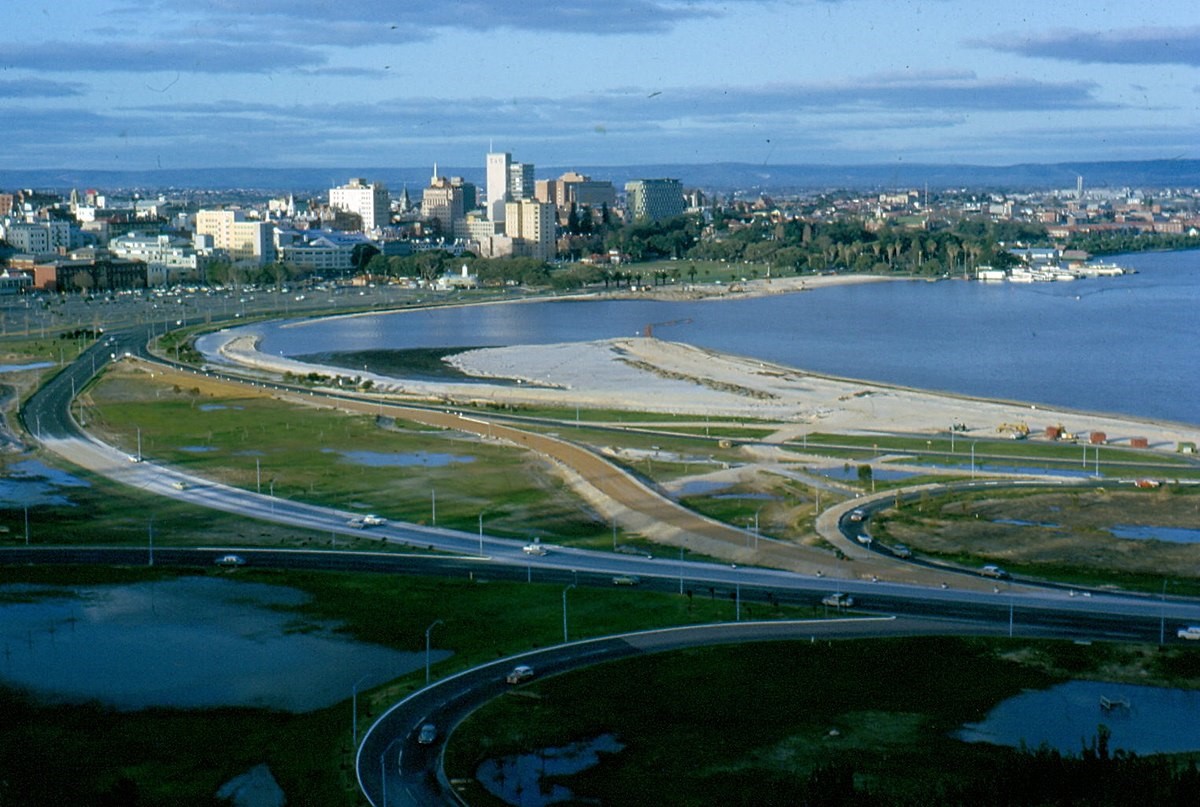Description

Disclaimer: Copyright infringement not intended.
Context
- With coastal areas around the world threatened by rising sea levels and increasingly destructive storms, is land reclamation a feasible strategy?
What is Land reclamation?
- It is the process of creating new land from oceans, seas, riverbeds or lake beds. The land reclaimed is known as reclamation ground or land fill.
- In some jurisdictions, including parts of the United States, the term "reclamation" can refer to returning disturbed lands to an improved state.
Methods
- Land reclamation can be achieved by a number of different methods.
- The simplest method involves filling the area with large amounts of heavy rock and/or cement, then filling with clay and dirt until the desired height is reached.
- The process is called "infilling” and the material used to fill the space is generally called "infill".
- Draining of submerged wetlands is often used to reclaim land for agricultural use.
- Deep cement mixing is used typically in situations in which the material displaced by either dredging or draining may be contaminated and hence needs to be contained.
- Land dredging is also another method of land reclamation. It is the removal of sediments and debris from the bottom of a body of water. It is commonly used for maintaining reclaimed land masses as sedimentation, a natural process, fills channels and harbors.
Agriculture
- Agriculture was a driver of land reclamation before industrialisation.
Artificial islands
- Artificial islands are an example of land reclamation.
- Kansai International Airport (in Osaka) and Hong Kong International Airport are examples where this process was deemed necessary.
Beach restoration
- Beach rebuilding is the process of repairing beaches using materials such as sand or mud from inland.
- An example of this is the city of Mumbai.
Landfill
- As human overcrowding of developed areas intensified during the 20th century, it has become important to develop land re-use strategies for completed landfills.
- Some of the most common usages are for parks, golf courses and other sports fields.

Background
Land reclamation in the past
- People have been reclaiming land from the sea for centuries, to control flooding and make more space for agriculture and coastal industries.
- Traditionally, this meant building a series of dikes to enclose tidal marshes or shallow offshore waters and draining these enclosures to create dry land.
- In some cases, streams were diverted to carry additional sediment into these areas, building up the land to a higher level.
- Soil and stone could also be excavated from the mainland and dumped along the shore or on the coast of existing islands, gradually expanding the land into the sea.
Land reclamation now
- Today, many reclamation projects in rapidly growing urban centers across the Global South have advanced far beyond a simple dike.
- The increased economic importance of coastal zones, especially in East Asia, the Middle East and West Africa, has spurred a rush to stake a claim in this new land for luxury residential, upscale commercial and industrial space.
- Major engineering projects now involve the construction of kilometers of offshore concrete barrier walls, which are filled with substantial amounts of sand, earth, clay or rock, often shipped in from far afield.
- The reclamation site can also be filled with dredged soil from the nearby seafloor mixed with water, in a process known as hydraulic reclamation.
|
DID YOU KNOW?
The projects in 106 cities around the world had altogether created around 2,530 square kilometers of coastal land, an area roughly the size of Luxembourg.
|
- Nearly 90% of that land was created in East Asia, most often to make way for industry and port facilities catering to the globalized economy.
- From 2000 to 2020, Shanghai alone added around 350 square kilometers, with Singapore and Incheon, in South Korea, also raising vast new areas.
Concerns
- Until fairly recently, reclamation projects didn’t take into account the risk posed by rising seas levels linked to climate change.
- In the past couple of decades, land reclamation has been in low-lying areas with more than 70% of that land “at high risk from coastal flooding between 2046 and 2100”.
- Using materials like sand which are obtained from the marine and river environment can mean the destruction of habitats and spawning grounds of organisms.
Sill a feasible solution?
- Land reclamation will continue to be a solution for many countries around the world to address its more pressing needs for increased development and urbanization, balancing economy and ecology.
- Cities are already spending the money to include “future-ready” reclamation techniques — including seawalls and breakwaters — in ongoing reclamation projects, as well as reinforcing and elevating existing coastal defenses.
- But the question is: “Is it worth to spend billions of dollars, disrupt local communities and livelihoods and permanently damage the marine ecosystems to create new land of several meters in altitude, which would only last several decades?”
|
PRACTICE QUESTION
Q). Is it worth to spend billions of dollars, disrupt local communities and livelihoods and permanently damage the marine ecosystems to create new land of several meters in altitude, which would only last several decades? Elucidate. (250 words)
|

https://indianexpress.com/article/explained/explained-climate/sea-levels-rise-land-reclamation-8610074/












